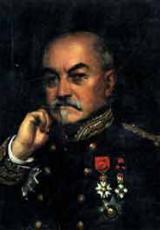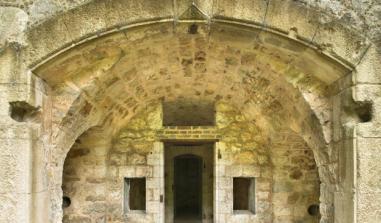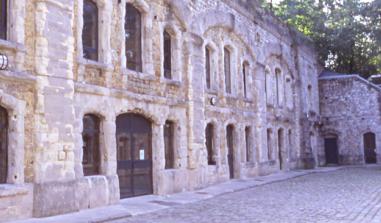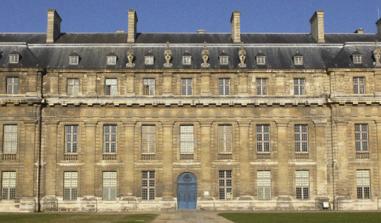Fort at Ivry-sur-Seine
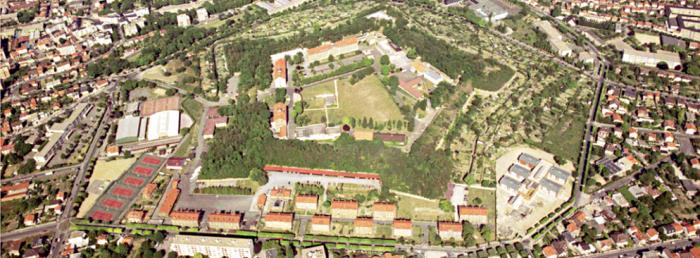
Prise de vue aérienne du fort d'Ivry. ©Michel Riehl – Source : ECPAD
This fort, constructed between 1841 and 1845, was modified after the war of 1870 in order to defend Paris.
Now the property of the Communication and Audiovisual Production Company for the Department of Defence (E.C.P.A.D), the fort at Ivry-sur-Seine (Val-de-Marne), constructed between 1841 and 1845, was modified after the war of 1870 in order to defend Paris. It is part of the first line in Séré de Rivières' system.
Constructed between 1841 and 1845, the fort was equipped in 1870 with 94 artillery pieces and commanded by Sea Captain Krantz. It was defended by a marine battalion that had come from Brest. On the 29th and 30th November, the fort supported the attacks from the outposts of the 6th Prussian corps to the north of Choisy-le-Roi, Thiais and Chevilly-la-Rue. On the 30th these three villages received 5,500 shells in a single day. The besieging troops owe their salvation to the numerous trenches. The French abandoned the captured positions on the evening of the 30th. The fort was occupied by the 6th Prussian corps from the 29th January until the 20th March 1871. A battery of 21 cm mortars was brought into the gorge to fire on the central section and batteries of 15 cm cannons to bombard Paris in the event that fighting should start again. The townspeople occupied the fort after the departure of the Prussians, with Colonel Rogowski in command of the confederate garrison. Faced with the threat of an attack by troops from the 3rd Versailles corps, the Confederates evacuated the fort during the night of the 24th to 25th May, blowing up a munitions depot and destroying nine of the casemates between the 3rd and 4th sides.
The fort is a pentagon with 5 bastions. It is built on underground galleries; only one of the bastions is not entrenched in the foundation piers. The galleries (more than 2 km) were planned out between 1852 and 1860 to keep watch over these piers and serve as shelters from bombardments (the ceilings of these galleries are 6 m thick). During the works, 2 battalions from the 65th Line Regiment were used, housed in an army camp close to the fort. The dominant position of the fort is clearly visible from the crossroads to the north of the entrance. The entrance accommodates two guardhouses in five vaulted casemates. There are also three postern gates, of which 2 are next to the latrines, along the other sides. The ramparts and bastions are bridged by about fifty cross sections, including 28 with vaulted shelters. The rampart between bastions 3 and 4 protects 18 casemates; one of them had a bread oven. The flanks adjacent to the bastions have gun casements for the infantry. The four other ramparts have a scarp with protected walkway for the infantry. The parade ground is surrounded by a large barracks for the troops and two houses for officers. These buildings were rebuilt in 1872. The 2 gunpowder magazines have an internal surface area of 142 m2. The fort is served by 3 wells. The building is faced in millstone, with cut stone for the stays and window and door surrounds. The buildings have tiled or zinc roofs. The arches of the casemates and magazines are in stone. The ditches between bastions 1, 2, 3 and 4 are still preserved. To the west, a police barracks occupies the place of the ditches. On the glacis there are now gardens, a college, a school, some houses and other buildings. Access is still via a casemate guardhouse. The rampart has kept its cross sections and casemates, although the latter have been converted into offices. The three barracks rebuilt after 1872 have been redeveloped, along with the two gunpowder magazines dating from 1847.
The premises now house the Communication and Audiovisual Production Company for the Department of Defence (E.C.P.A.D). They store the audio-visual archives of the military history of France from 1900 to the modern day, through 16,800 films and videos and more than 3.5 million de photographs. The first world war collection collates all the pictures and films made by the Armed Forces Photographic and Cinematographic Division (SPCA) from 1915, the date it was established, to 1919 when it was suspended. This collection is made up of images directly linked to: fighting and its aftermath: the French front and the Eastern front, the lives of poilus (a slang term fro a French soldier), the army medical corps, prisoners and what remains of the battlefields; images of the economic effort of the country and its colonies; images of political and diplomatic life: official visits of heads of state or foreign delegations, the Treaty of Versailles etc. pictures and works of art, monuments and museums and photographs taken in anticipation of reconstruction. The second world war collection collates all the documents issued by the various forces represented: the phony war documents the life of the French armies in the countryside, from the North Sea to the Italian border, between the declaration of war and the start of the French campaign; Vichy is concerned with the actions of the government and the Armistice Army, mainly in the free zone in North Africa before the allied landings; The Liberating Army follows the main fighting that took place from North Africa to Europe, from Algiers in November 1942 until the liberation of the concentration camps in 1945.
The German collection is especially large, due to the great number of operational theatres illustrated along the eastern front and through the diversity in the subjects covered in the military field (scenes of fighting and training, the lives of units on the front, the repression of people in the east and the manufacture of weapons) and in everyday life. Managed by the Armed Forces Cinematographic Division (SCA) which was united after the war, the Indochina war collection groups together Tonkin, Annam, Cochinchina, Cambodia and Laos. Although military documentaries, most of which were about the land army, represent the main subject of this collection, there are also documents describing the way of life, habitat and special customs of the various ethnic groups. Many documents belonging to this collection illustrate French action in the colonies: keeping order, industrial and agricultural development, the construction of schools, housing and clinics and the establishment of administrative frameworks. They demonstrate approval of French presence in Indochina and Algeria. The external operations collection. Protecting France's fundamental interests can lead to the intervention of the armed forces outside their national territory. That is why we talk about external operations, carried out within the framework of international mandates, such as NATO and the UN. The main external operations covered by the ECPAD since 1945 are the Korean war (1952-1953), the Lebanon (1978-1984), Chad (1978-1987), Cambodia (1991-1993), the Gulf War (1991), Bosnia-Herzegovina (since 1992), Rwanda (1994), Kosovo and Macedonia (since 1998), the Ivory Coast and Afghanistan (since 2001).
Fort at Ivry-sur-Seine 2-8 route du Fort 94205 Ivry-sur-Seine Remembrance tourist information Mairie d'Ivry Esplanade Georges Marrane 94205 Ivry-sur-Seine cedex Tel.: 0149.60.25.08 Communication and Audiovisual Production Company for the Department of Defence (ECPAD) Tel: 01.49.60.52.00 Fax: 01.49.60.52.06 e-mail: ecpad@ecpad.fr or mediatheque@ecpad.fr
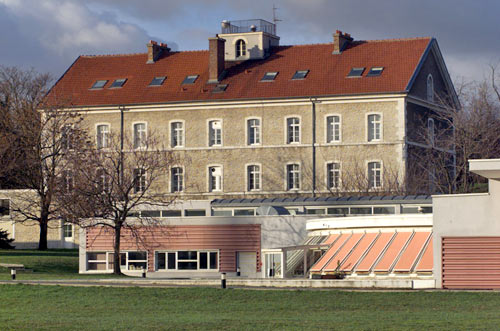
La médiathèque de l'ECPAD au fort d'Ivry sur Seine. Source : ECPAD
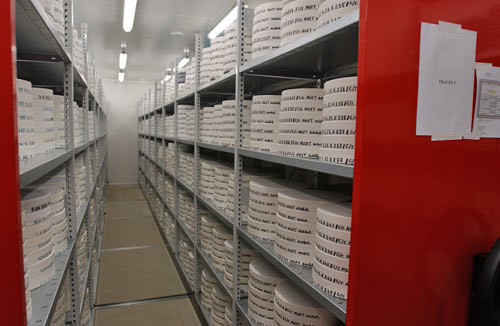
Allées de caissons réfrigérés où sont entreposés les bobines de film. Source : ECPAD
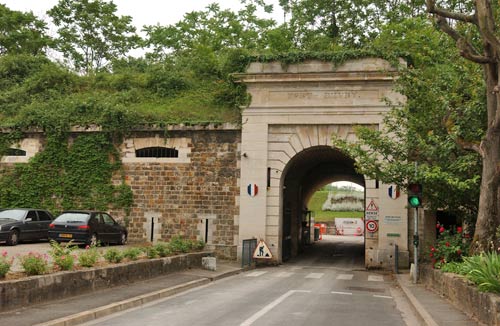
Entrée actuelle du fort. Source : ECPAD
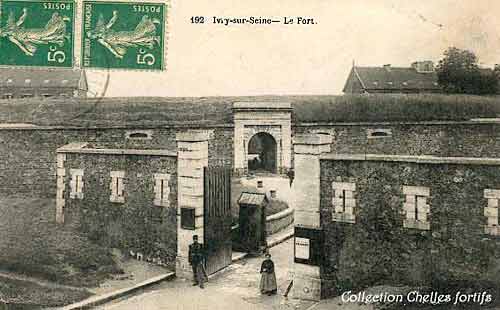
Carte postale du Fort d'Ivry-sur-Seine. Source : Petiln.free.fr
Practical information
2-8 route du Fort 94205
Ivry-sur-Seine
Tourisme de mémoire Mairie d'Ivry Esplanade Georges Marrane 94205 Ivry-sur-Seine cedexTél. : 0149.60.25.08Etablissement de communication et de production audiovisuelle de la défense (ECPAD)Tél : 01.49.60.52.00Fax : 01.49.60.52.06e-mail : ecpad@ecpad.fr ou
Se renseigner pour l'accessibilité au site


